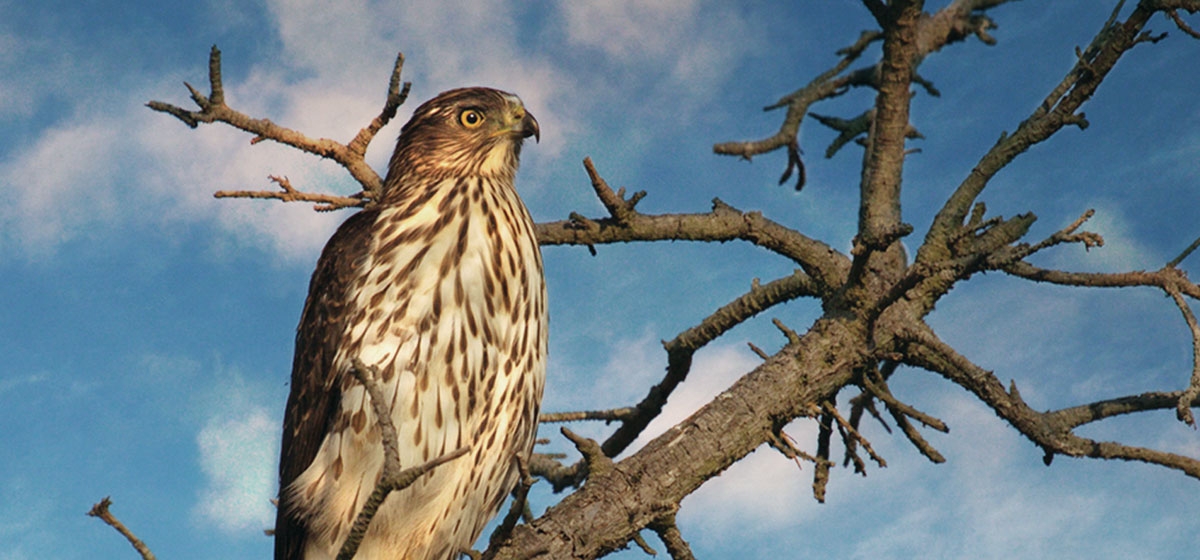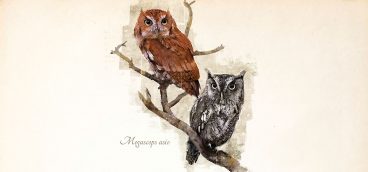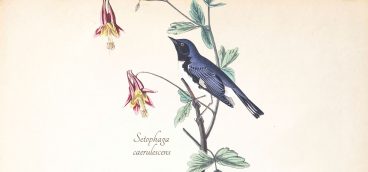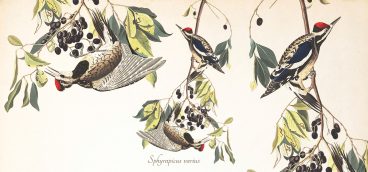
Near the iron gates of a hidden garden in Shadyside, a vigilant Cooper’s Hawk scans for prey. A Japanese Snowbell separates the bird from a row of roses fading into fall. There is a window, and the face of a man peering out with excitement and wonder. He can see the hawk, its beautiful warm brown color, its smallish head, curved beak, and body about as big as a crow. He sees the talons gripping the branch. He’s about to take its photo when it launches out with a majestic burst of light and speed.
The Cooper’s Hawk is a common accipiter, or woodland hawk. You’ve surely seen the larger Red-tailed Hawk perching on street lamps over Route 28 or out on the parkway. The Red-tailed is the heavy bomber to the faster, more agile fighter that is the Cooper’s. With its long tail and stiff wing beats, the Cooper’s Hawk is adapted to pursuit in close conditions. It can quickly gain speed and dash after a dawdling sparrow or autumnal migrant, threading the branches of Horse Chestnuts and Dogwoods, crashing through brambles and shrubs as it chases its meal. The Cooper’s appreciates fast food when it sees it, and the raptor has been known to stake out spots near bird feeders and pick off the wee songbirds that come in for seed. Woe to those fat and happy songsters, but forgive the hawk, who simply follows his nature. He’s a bird of prey and so must eat what’s on the wing or rustling under the tumbling leaves of fall.
Like its close cousin, the Sharp-shinned Hawk, the Cooper’s is common throughout the U.S., with a year-round range in all but the northernmost states. Because it eats both birds and mammals, the Cooper’s needn’t travel too far to find a meal and doesn’t make the continent-crossing travels that typify its many neotropical fellows. Still, the Cooper’s catches many of the same breezes south, gliding along the ridgelines of western Pennsylvania to leave the cold at least some distance behind. And why not? The small birds that travel south provide many of its meals, and there is no reason not to float along with them and dine en route.
Though not prone to the lazy, circling turns of the Red-tailed, the Cooper’s still presents a beautiful sight in the sky. While the larger hawk offers a broad wing span and mottled underbelly against the sun, the Cooper’s long tail is crossed by broad dark and lights bands. The tips of the tail are dipped in white. And its breast changes from a mix of brown and white streaks when young to a warm cinnamon wash as an adult. Likewise, its eyes turn color from yellow to a blood red. That’s a startling yet common transformation in this group of hawks.
If you’ve ever watched a Hollywood film, you know the cry of the Red-tailed Hawk, which the sound mixers use for everything from Bald Eagles to the Red-tailed itself. There’s something ever so lonesome and raptorial about it. In contrast, the voice of the Cooper’s is somewhere between a dog’s squeaky toy and the repetitious kak-kak-kak of a nocturnal jungle inhabitant. Never expect to hear a Cooper’s Hawk on screen. It’s just not going to happen. You might hear the Cooper’s next spring, though. They’ve nested in recent years in Frick Park and are common enough throughout the region.





